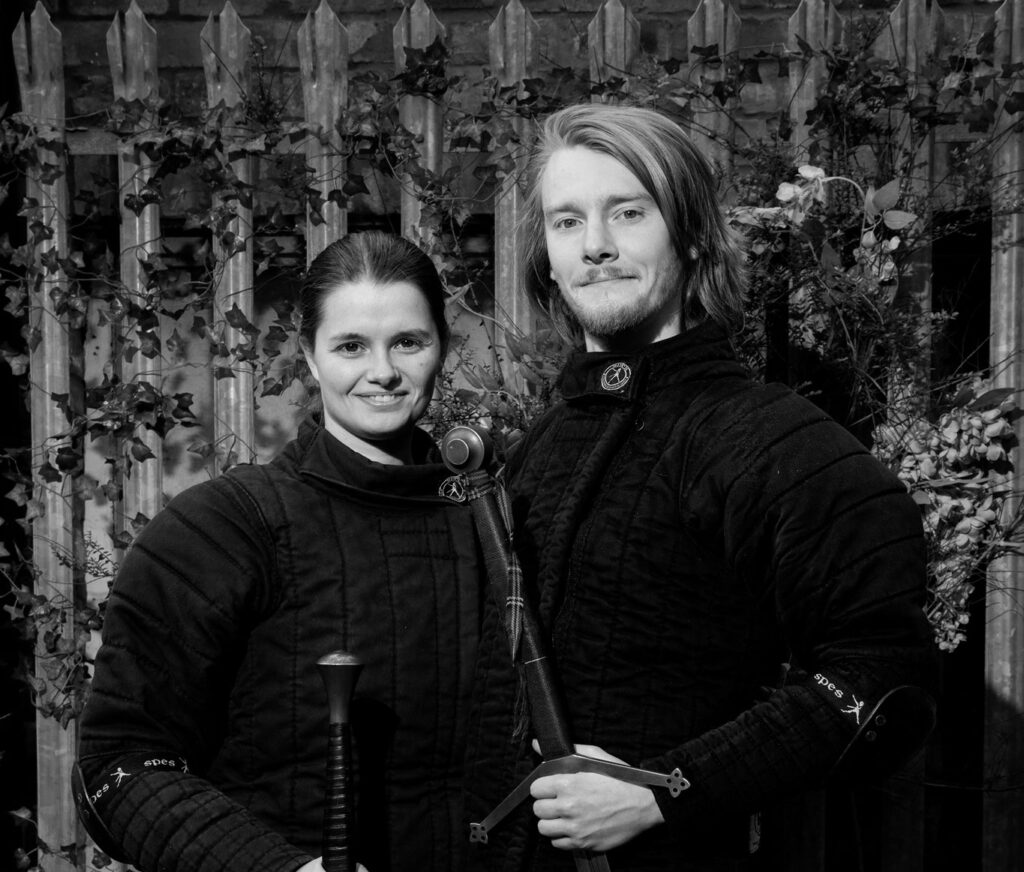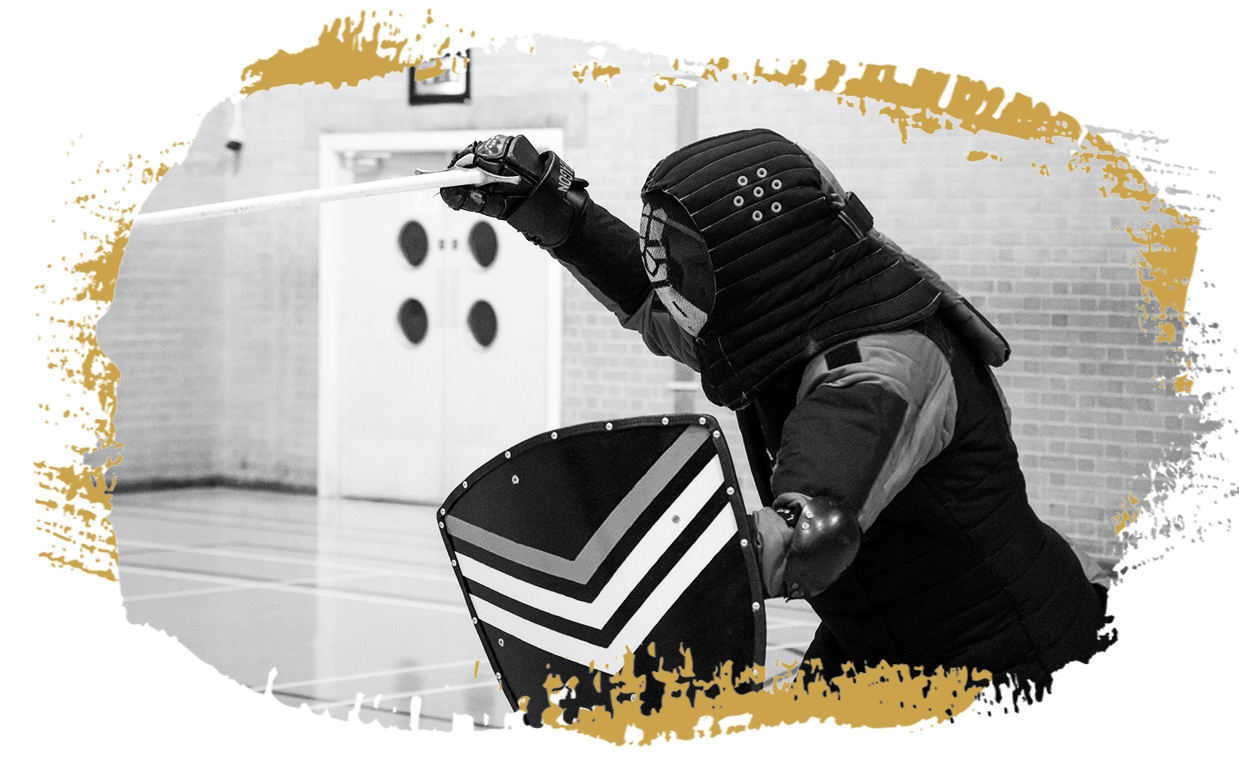A primary focus of this session is to develop the effectiveness of the direct attack. We will then explore the opportunities that a good direct attack gives us in the fight.
Other major learning considerations are: fainting with minimal movement and understanding deep vs shallow target distance.
Section 1 – Intro to hand and foot timing
Theory: when sequencing our direct attack in broadsword it is vital that the hand begins the cut before our feet start to move, aiming for the cut to land while the back leg has completed it’s extension but before the front foot has hit the ground.
This does two things –
- The cut lands at the point of maximum acceleration and mass transfer of the body.
- The cut lands at the speed of the hand with minimal tells from the feet and body. This means our cuts from a lunge away should be able to beat our opponents reaction time.
Exercise: defender stands a lunge away with the arm relaxed and point towards the floor.
Attacker starts in a semi extended position and aims to land a cut to the top of the mask before the defender can react and raise the hand up to guard.
Considerations: attacker needs to avoid giving a tell to their opponent either by being still and relaxed or by masking the attack with some subtle background motion.
Progressions: variable distance management and add in the preparation for the cut of your choice.
Section 2 – Feints to the wrist set up by the direct attack.
Theory: From matching outside guards, once we have disengaged over our opponents blade, if they have not began to guard the second the blades detach it is very likely that a good direct attack will beat their reaction time and land to the inside of the mask.
However if we have sensitised our opponents to this threat then we can use the threat of this direct attack to make them move their guard with minimal movement on our part.
If they don’t guard early your cut will hit them. But if they do guard early they will present the outside their wrist to your blade.
It’s important that the feint itself is just pulling the blade backwards and across. Do not move the point forwards until your opponent has given you a target to hit.
Exercise: outside to outside. The attacker repeatedly attempts a disengage and cut high to the inside of the face. If hand and foot timing is good this should hit often.
Once the defender is able to guard this regularly it means they are sensitised to the Action and have become twitchy. At this point the attacker can feint to the wrist at a time of their choosing.
Considerations: if the feint stops working it’s important to charge it up by repeating the direct attack for a few reps.
Make sure the foot doesn’t move until the target is confirmed.
The hand asks the question and the foot answers. If both hand and foot move together it’s not a question is a statement.
Section 3-Staying safe when going for the shallow target.
Theory: We can’t get opposition when striking the arm so it is key that we only hit the arm when at maximum extension. This means full extension of the arm with the tip of the sword and either a forward or backward lunge.
Exercise: Attacker stays still, defender starts with hand low and moves randomly at any distance to the attacker (can be super close or far away)
Randomly the defender stops moving and lifts the arm up with a bent elbow to present a target for a cut 3 or 5 under the basket.
The attacker has to then land one of these cuts to the wrist with perfect distance either forwards or backwards on a lunge so that when they recover they are safe from the defenders long chasing afterblow.
Considerations: defender is being very cooperative up until the wrist hit land and then they are chasing an afterblow with a long lunge.
If your arm is bent in any way when you hit your opponents arm then you have misjudged Measure and are actually at deep target distance instead of Shallow target. This means you are almost guaranteed to afterblow.
Section 4 – Adding cut 3 to our feint pattern.
Theory: The right/left rising cut 3 starts with the same preparation as our cut 1. So if we have sensitised our opponents to an inside direct cut they will be very likely to move their hand to the inside and put their wrist perfectly in the way of our rising cut.
Exercise: begin the same as the previous feint exercise. Use lots of direct cuts to make your opponent twitchy to the inside.
Once they are sensitised throw a cut three under the wrist as they move to parry.
Considerations: don’t try to feint a cut 1 and then throw a 3. The cut 3 is a feint all by itself.
The arm has to be fully extended when we land the cut 3.
Since the 3 is aimed at the arm, in order to keep good distance we shouldn’t lunge when we throw the cut under the basket.
Once this exercise has been well practiced it should be fine with complex and variable distance and footwork.
Ben Hamilton
Saorsa



